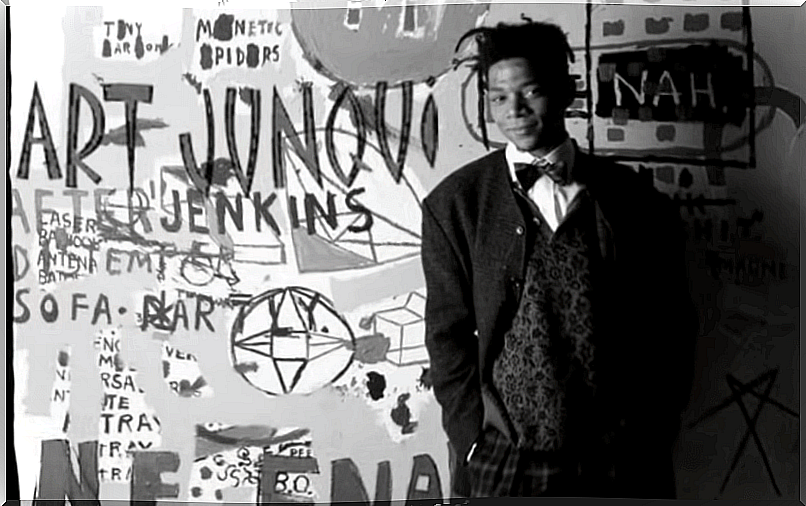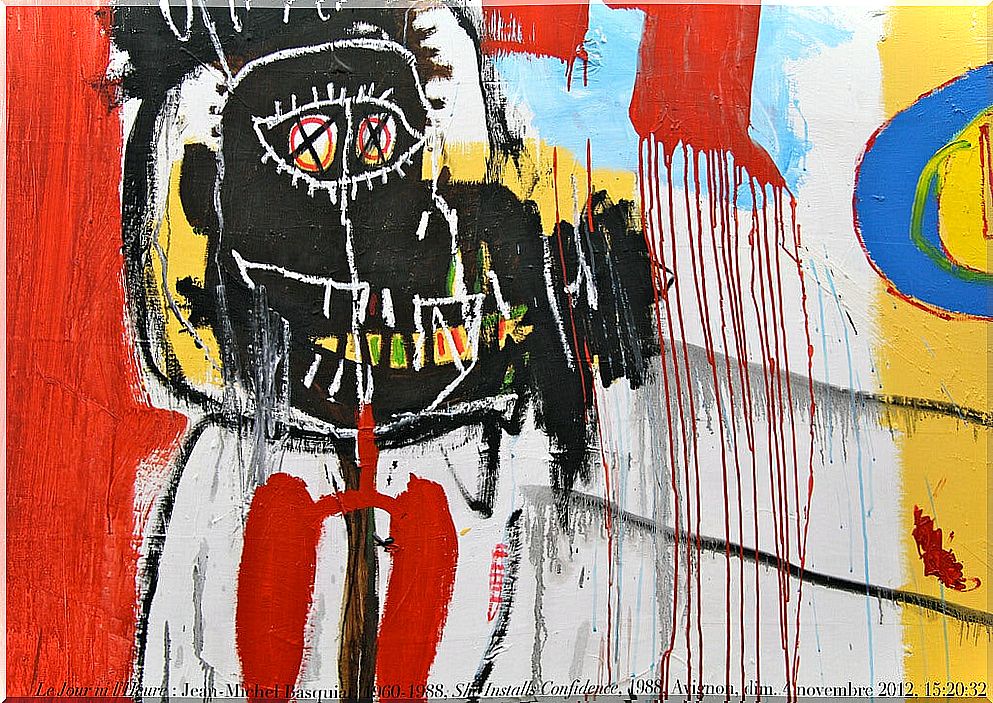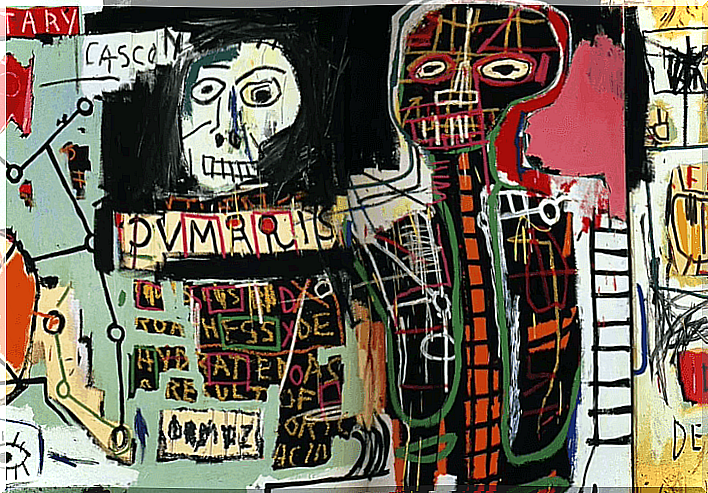Jean-Michel Basquiat, Biography Of A Post-pop Artist

When you talk about Jean-Michel Basquiat, you are talking about creativity, irreverence, surprise and new sensibilities. It was a symbol of urban art, of the mixture of cultures and of the new sensibilities of contemporary man. His art, like his life, is an amalgamation of tenderness and brutality at the same time.
This American artist became famous thanks to his graffiti and his painting. In his lesser-known facet, Basquiat also dabbled in drawing, music, and even poetry. He was, perhaps, one of the first representatives of that hybrid that is the contemporary artist, who no longer becomes famous for his virtuosity, but for the multiplicity of meanings that make up his work.
Jean-Michel Basquiat lived only 27 years, but despite his untimely death, he managed to become a benchmark for contemporary art. He had a wandering, lively and tragic existence. The axis that defined him was rebellion against the world, a certain malaise that never left him and that was reflected in each of his graffiti, paintings, poetry and musical themes.

Jean-Michel Basquiat, son of immigrants
Jean-Michel Basquiat was born on December 20, 1960 in Brooklyn, New York (USA). He was the son of Gerard Basquiat, a Haitian accountant, and Matilde Andrades, a Puerto Rican graphic designer, who had an important influence on his work. He had two sisters, both younger than him. This origin would mark him forever and, very soon, he would come into contact with the new forms of urban art that were developing around him, especially in those most marginal neighborhoods of the city.
From a very young age, Jean-Michel showed great interest in drawing. His father brought him company paper and the boy filled it out with sketches that he copied from the dictionaries at home. His mother noticed his early interest and tried to encourage him. He frequently took him to the great museums of the city and also instilled in him a taste for reading. Very soon, little Basquiat became a voracious reader.
Later, Jean-Michel Basquiat became very interested in cinema and cartoons. In particular, he had a deep fascination for Alfred Hitchcock films. When he was 8 years old, he was hit by a vehicle and was hospitalized for a month. To help him cope with convalescence, his mother gave him a Henry Gray anatomy manual. This book had a decisive influence on his work.
The stormy years
Jean-Michel Basquiat’s life turned stormy from the age of 11. His parents separated and he remained living with his father, as his mother suffered from a severe depressive condition. At age 16, he fled his home for the first time, but later returned. At this time, Basquiat is sent to a specialized school for gifted children. There, he will meet his first great artistic co-worker, Al Díaz.
Since the 1960s, New York, and specifically some slums like the Bronx, was experiencing the flowering of a new kind of art. Art was no longer exclusive to museums, but was brewing in the streets, in the corners. Young people from marginal neighborhoods found their way of expressing themselves on the walls of the city, staining them with vindication and, above all, with art.
In his teens, Basquiat began to formally dabble in graffiti, but he also came into contact with drugs. He is closely involved with street performers. Together with his friend Al, they fill the walls of New York with their graffiti, especially in the Soho area. His graffiti were characterized by poetic messages and strange symbols.
Basquiat and Al Díaz signed the graffiti with the acronym SAMO, which stood for SAMe Old shit , that is, “the same old shit. ” At that time, he dabbled in theater and music. He also runs away from home for the second time and spends more than two weeks consuming acid. Basquiat was expelled from his school and, from this moment, decides to start a life alone, leaving his home and studies.

A work of transcendence
Many of his works are born from that suburban culture and his black condition, with Latin roots. Soon he draws the attention of the critics, who start talking about the graffiti signed by SAMO. Shortly after, he was part of the first group of graffiti artists to exhibit in a museum in the United States. Urban art was no longer exclusive to the streets, but was something worth taking its place in museums.
Then begins a stage in which success was combined with an increasingly severe addiction to drugs. In total, Basquiat held more than 100 group exhibitions and 40 individual ones. He was the youngest artist in history to be invited by the prestigious Documenta fair and by the Kestner-Gesellschaft Museum in Hannover. He struck up a great friendship with several great artists, especially Andy Warhol, who worked with him for several years.
Jean-Michel Basquiat was a great traveler. He had not yet come from a journey that was already embarking on another. Drugs and a strong self-destructive instinct marked his life. He wasted money buying expensive clothes, cocaine and heroin. He was also the victim of several robberies.
In 1988, he took a trip to Hawaii, in order to detoxify. On August 1, he returned to New York and declared that he had given up his addictions. On August 12 of the same year he died as a result of an overdose.
A life full of ups and downs, of instabilities that, unfortunately, ended prematurely. However, nowadays, the name of Jean-Michel Basquiat continues to be synonymous with innovation, with street art … And, above all, with how this urban art can be celebrated and worthy of admiration in a museum; although this, in some way, entails the loss of the ephemeral and, in a way, also of the urban.
For this reason, he was not exempt from criticism, as some contemporary artists saw him as a mass phenomenon, as someone who had sold himself. Street art is not intended for museums, but for the streets and, for many, it should reside there until its disappearance, without intervening in its conservation.
Be that as it may, and regardless of the point of view we have about this type of art, there is no doubt that Jean-Michel Basquiar managed to vindicate and give voice to a movement that, up to that moment, was considered of tasteless and totally marginal.









